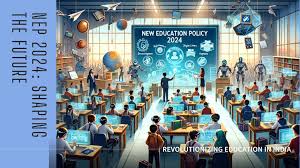Educational policies and reforms are critical for ensuring that education systems meet the evolving needs of students, educators, and societies. From addressing inequality to integrating technology, these reforms aim to enhance the quality, accessibility, and relevance of education worldwide. In this article, we explore key aspects of educational policies and reforms and their impact on learning.
1. Promoting Equity in Education
Equity in education is a primary focus of modern reforms. Policies are being developed to bridge gaps caused by socioeconomic, geographic, and cultural disparities, ensuring all students have access to quality education.
Key Examples:
- Providing free or subsidized education for low-income families.
- Supporting marginalized groups with inclusive curriculums and special programs.
SEO Tip: Keywords – equity in education, inclusive education policies, reducing educational inequality
2. Embracing Technology in Education
The integration of technology is transforming how education is delivered. Policies now emphasize the use of digital tools, online resources, and e-learning platforms to enhance learning experiences and accessibility.
Key Examples:
- Providing students with devices like laptops or tablets.
- Offering teacher training programs for effective technology use.
SEO Tip: Keywords – technology in education policy, digital learning reforms, edtech integration
3. Reforming Curriculums for the 21st Century
Outdated curriculums are being replaced with modernized content that emphasizes skills like critical thinking, problem-solving, and digital literacy. Reforms also focus on interdisciplinary learning and STEM education.
Key Examples:
- Introducing coding and robotics in schools.
- Incorporating climate change and sustainability topics.
SEO Tip: Keywords – 21st-century curriculum reforms, STEM education policies, modern education standards
4. Addressing Teacher Training and Development
Teacher quality directly impacts student outcomes, making professional development a cornerstone of education reforms. Policies focus on equipping educators with new teaching strategies and technologies.
Key Examples:
- Continuous professional development programs.
- Mentorship initiatives for new teachers.
SEO Tip: Keywords – teacher training policies, professional development for educators, improving teacher quality
5. Enhancing Early Childhood Education
Early childhood education is receiving greater attention in policy reforms, as research highlights its importance in cognitive and emotional development. Policies aim to make preschool education universally accessible.
Key Examples:
- Expanding affordable childcare programs.
- Implementing play-based learning strategies.
SEO Tip: Keywords – early childhood education policies, preschool reforms, importance of early learning
6. Focusing on Lifelong Learning
Lifelong learning policies promote continuous education and skills development to keep up with evolving job markets. This includes adult education programs and reskilling initiatives.
Key Examples:
- Offering free online courses for adults.
- Establishing vocational training centers.
SEO Tip: Keywords – lifelong learning policies, adult education reforms, reskilling programs
7. Standardized Testing vs. Holistic Assessment
Educational reforms are shifting from traditional standardized testing to holistic assessment methods that evaluate a student’s overall abilities, including creativity, collaboration, and emotional intelligence.
Key Examples:
- Introducing project-based assessments.
- Reducing emphasis on high-stakes testing.
SEO Tip: Keywords – holistic assessment in education, standardized testing reforms, alternative student evaluation
8. Strengthening Vocational and Technical Education
Vocational and technical education is gaining momentum as policies aim to equip students with job-ready skills. These reforms cater to industries requiring specific technical expertise.
Key Examples:
- Partnering with industries for apprenticeship programs.
- Establishing career-oriented schools and colleges.
SEO Tip: Keywords – vocational education policies, technical training reforms, skill-based learning
9. Addressing Mental Health in Education
Policies are increasingly recognizing the importance of mental health support for students and educators. Reforms aim to create safe and nurturing learning environments.
Key Examples:
- Embedding social-emotional learning (SEL) in curriculums.
- Hiring more school counselors and psychologists.
SEO Tip: Keywords – mental health education policies, SEL programs, student wellness reforms
10. Global Collaboration in Education
International partnerships and collaborations are shaping education policies worldwide. Countries are sharing best practices, research, and resources to address global challenges like literacy, climate education, and digital equity.
Key Examples:
- UNESCO’s global education initiatives.
- Cross-border student exchange programs.
SEO Tip: Keywords – global education reforms, international collaboration in education, UNESCO education initiatives
Conclusion
Educational policies and reforms are pivotal in building resilient and future-ready education systems. By addressing equity, embracing technology, and fostering lifelong learning, these reforms aim to prepare students for the challenges of a rapidly changing world.
Optimized Meta Description: Discover how modern educational policies and reforms are addressing equity, integrating technology, and transforming curriculums to shape the future of learning.
Would you like me to expand on a specific reform or provide data-driven insights for a more detailed article?
